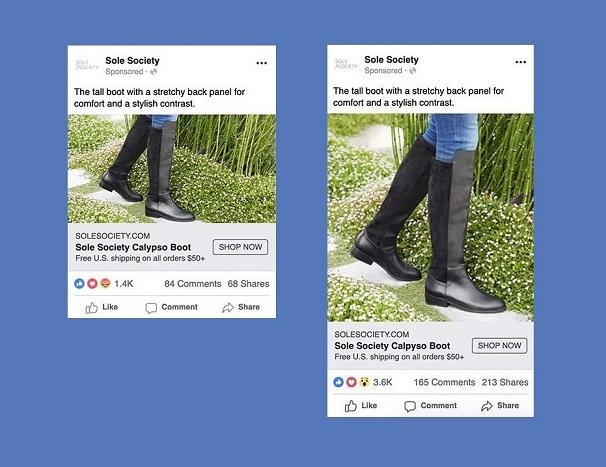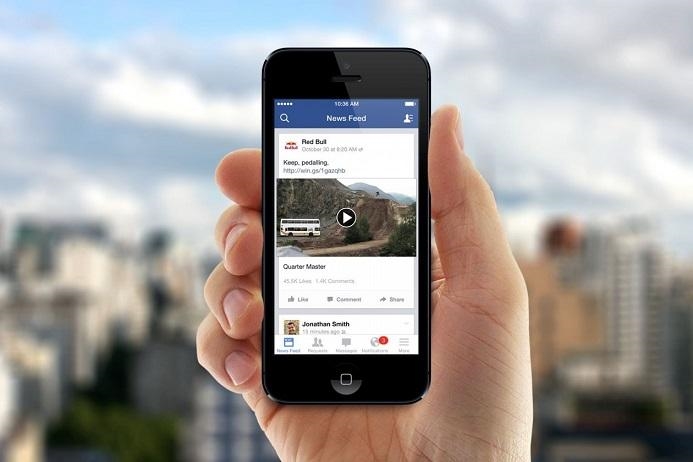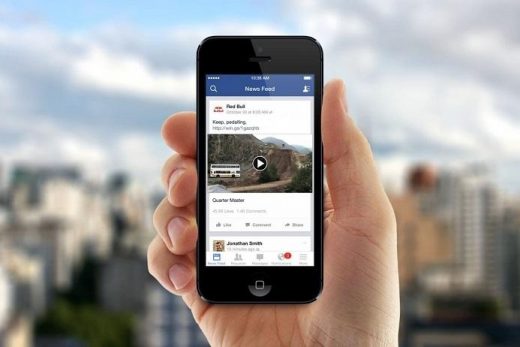The All-in-One Guide to Facebook Ad Sizes, Specs, & Strategies
With rapid expansion of targeting options, improvements to machine learning optimizations, and the overall efficiency and focus on advertiser needs, Facebook has never been a stronger advertising platform.

However, with rapid innovation comes rapid change. Staying on top of all of the updates becomes increasingly challenging as new ad types and creative options become available. Image sizes, placements, and creative formats have changed quite a bit since Facebook launched advertising in 2014.
That’s why I’m here to help. In this complete guide to Facebook ad creative, I will walk you through your creative options for Facebook, including Facebook ad sizes and specs, as well as how to strategically approach them.
Facebook ad sizes, specs, and strategies
Facebook has made so many placements available to advertisers over the past few years and, although each has its own nuances, there are standard sizes for images and videos that should allow you to only have to make one or two variations of creative. Here, I’m going through each to explain the specs and strategies for your advertising, including advantages and disadvantages of each.
Pro tip: Although many placements run smaller than the general feeds placements, Facebook will properly resize the larger image, so it is best to stick to the generalized larger format.
With that, let’s get to it.
Facebook static single image ad sizes
Rectangle: 1200 x 628

Advantages: The 1200 x 628 pixel static image ad has been the standard for Facebook for quite some time. This image size is fairly interchangeable between all available placements; however, in recent months, the 1200 x 628 is pretty much becoming a secondary option for many advertisers as Facebook has begun to favor the 1080 x 1080 square image within Facebook and Instagram placements. Why? That square image takes up a lot more real estate on a mobile user’s screen. With that being said, in my experience, the 1200 x 628 pixel image size still converts well so it doesn’t appear that the lack of vertical space is hindering the performance of these image sizes too much.
Disadvantages: Less vertical space taken up on mobile placements. The dimensions for the 1200 x 628 ad image was originally constructed for the desktop News Feed and to be able to be easily transferred to subsequently smaller placements thereafter. So, for example, you would have a 1200 x 628 pixel image for the desktop News Feed and Facebook would be able to scale that image down efficiently to appear in the desktop right column and mobile News Feeds accordingly.
Available Placements:
- Facebook News Feed
- Facebook Instant Articles
- Facebook In-Stream Videos
- Facebook Marketplace
- Facebook Stories
- Instagram Feed
- Instagram Stories
Square: 1080 x 1080 pixels
Advantages: As previously mentioned, Facebook encourages advertisers to begin to use these larger square ads. The primary reason for this has been a direct result of both the boom in Instagram usage and the far greater volume of users on mobile for both platforms. The combination of those two factors has given Facebook the incentive to allow advertisers with the larger piece of ad real estate to make their impact. The added benefit of the square image ad is that it seamlessly transitions to the Instagram placement without looking odd.

Disadvantages: It’s not entirely certain if square ads objectively perform better on Facebook placements. With more time and more data, we will begin to understand.
Available Placements:
- Facebook News Feed
- Facebook Instant Articles
- Facebook In-Stream Videos
- Facebook Marketplace
- Facebook Stories
- Instagram Feed
- Instagram Stories
**Stories Sizes: Keep in mind you can create image sizes specifically for stories that would be 1080 x 1920 pixels. An additional benefit to using the larger square image is that it fills in more of this space.
Facebook single video ad specs
Video sizes are pretty straight forward. Although Facebook allows for longer running times, I wouldn’t suggest promoting videos that run too far over one minute. Of course, the content and goal of the video comes into play, but you’ll want a high percentage of users to view the full video. With that being said, the specs for Facebook video ads are as follows:
- Format: .MOV or .MP4
- Aspect Ratio: 16:9
- Resolution: 720p at minimum
- File Size: 2.3 GB maximum
- Length: 120 minutes (Facebook) or 60 seconds (Instagram)
- Thumbnail Image: 1,200 x 675 pixels, 16.9 ratio
- Caption: 2,200 characters maximum

Many advertisers believe that video ads will revolutionize the results that they drive from the platform. But videos on the other hand, takes much more time and preparation in order to ensure that it achieves the same effect if not better. A video gives the user more information; however, in an age of diminishing attention spans less can be more. This, of course, changes entirely if your goal is simply user engagement—but more on how to choose formats based on your marketing goals later. Just be aware that the amount of effort that needs to be put into said piece of creative may not be worth it to an advertiser with a limited budget.
Advantages: Videos can be powerful from both a branding and lead generation perspective. When you have the resources to create multiple video variations, you can learn a lot about your target audiences.
Disadvantages: Creating a compelling, concise, and on-brand video that will achieve a desired goal outside of clicks and engagement can be difficult to achieve for many advertisers (especially smaller ones). Videos can take quite a deal of effort to produce with limited design support—if that’s your business, look for tools to help create video content. And keep in mind that a video won’t instantly out-perform static or carousel creative just based on its format.
Gifs: An alternative to having to produce a full 15-second to 60-second video content would be to create a gif. A gif can be saved as an .MP4 format and uploaded just as you would with a video. Like a single static image, a gif can convey enough information within a short period of time without having to rely on long-form information-dense creative effort. I’ve seen gifs work particularly well for B2B lead generation, particularly when physical products are being marketed.
Facebook carousel image ad sizes
Size: 600 x 600 pixels
Advantages: Carousel ads carry various advantages to advertisers looking to either form a narrative through multiple images and copy or those looking to showcase multiple products or promotions within a single ad. For ecommerce advertisers, the ability to show dynamic catalog ads via the carousel format can be extremely effective.
Disadvantages: For many advertisers I have seen rather mixed results with carousel ads. I believe it depends greatly on your product, service, or promotion. With the single static image, you have the ability to capture an audience’s attention with one compelling piece of creative. With carousel ads, you have the freedom to provide more information and more images—but all of them need to be compelling enough for the user to browse and eventually click through. When weighing the options of a static single image versus carousel, consider the nature of your product, service, or promotion, and decide whether the user needs more time to digest that information on the ad level instead of allowing the landing page or lead form to do the persuading.
Facebook carousel video ad specs
These specs are, understandably, a bit different:
- Resolution:1080 x 1080
- Number of cards: 2-10
- File type: .MP4 and .MOV
- File size: 4GB
- Length:
Digital & Social Articles on Business 2 Community
(41)


